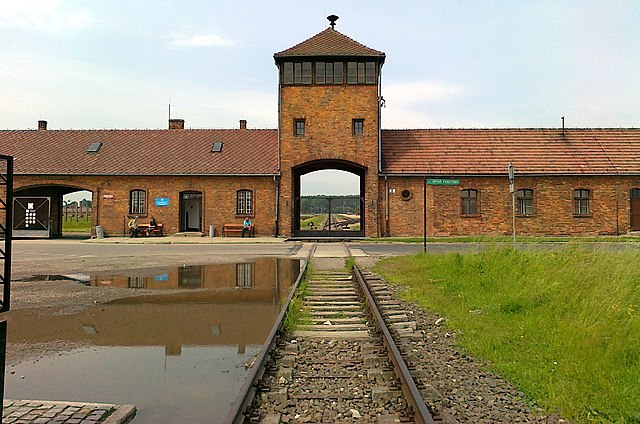Nazi human experimentation
Nazi human experimentation was a series of medical experiments on prisoners by Nazi Germany in its concentration camps mainly between 1942 and 1945. There were 15,754 documented victims, of various nationalities and age groups, although the true number is believed to be more extensive. Many survived, with a quarter of documented victims being killed. Survivors generally experienced severe permanent injuries.
"A Jewish prisoner in a special chamber responds to changing air pressure during high-altitude experiments. For the benefit of the Luftwaffe, conditions simulating those found at 15,000 meters [49,000 ft] in altitude were created in an effort to determine if German pilots might survive at that height."
A cold water immersion experiment at Dachau concentration camp presided over by Ernst Holzlöhner (left) and Sigmund Rascher (right). The subject is wearing an experimental Luftwaffe garment.
A victim loses consciousness during a depressurization experiment at Dachau by Luftwaffe doctor Sigmund Rascher, 1942.
Child victims of Nazi experimentation show incisions where axillary lymph nodes had been surgically removed after they were deliberately infected with tuberculosis at Neuengamme concentration camp. They were later murdered.
Auschwitz concentration camp
Auschwitz concentration camp was a complex of over 40 concentration and extermination camps operated by Nazi Germany in occupied Poland during World War II and the Holocaust. It consisted of Auschwitz I, the main camp (Stammlager) in Oświęcim; Auschwitz II-Birkenau, a concentration and extermination camp with gas chambers; Auschwitz III-Monowitz, a labour camp for the chemical conglomerate IG Farben; and dozens of subcamps. The camps became a major site of the Nazis' Final Solution to the Jewish question.
Image: Auschwitz I (22 May 2010)
Image: Birkenau múzeum panoramio (cropped)
Auschwitz I, 2013 (50°01′39″N 19°12′18″E / 50.0275°N 19.2050°E / 50.0275; 19.2050 (Auschwitz I))
Auschwitz I, 2009; the prisoner reception center of Auschwitz I became the visitor reception center of the Auschwitz-Birkenau State Museum.








